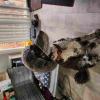Sorry Charles, I guess I didn't clarify.
My posts are entirely dealing with final product produced by one facility and bagged by the other.
Incoming unrefined sugar is a commodity and tracked by the vessel, it was also not considered a food product until we turned it into one. Our facility was the beginning of the FDA regulated food chain.
Hi Tim,
Thks for clarification.
There is often confusion in the use of terminologies traceability/mock recall/product recall/mass balance.
As I understand, your percentages in Post 8 were referring to a mass balance for the bagging operation. This seems to be a "special" interpretation of (FS) Mock Recall.
Here is BRC's overlaying Guideline -
In keeping with the traceability requirements for manufactured and processed products, sites that trade food products are required
to maintain traceability [backward/forward], allowing food businesses and authorities to withdraw or recall products that have been identified as unsafe.
BRC Standard makes no specific mention of "mock recall" but it represents a Product Recall "methodology" involving, inter alia, quantitative forward traceability (eg see previous link). Demonstration of Backward traceability can be quantitated via a mass balance.
@ Cici - IMO the answer to yr Posts 1, 5 is Probably, mostly, NO (assuming you can validate the result for post 5). Full traceability is stated as typically expected within 4 hours (with caveats). (the BRC, I.G. is a "Guideline").
I suggest you obtain the BRC Interpretation Guide . This has a substantial discussion of the accuracy expectations concerning product recall/forward/backward traceability/ mass balance (eg sections 3.9, 9.5).
.



















